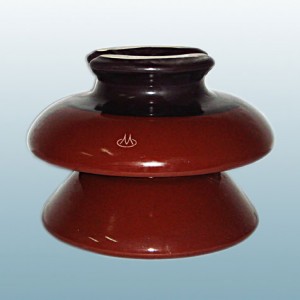A Insulator made by hard paste of Porcelain is also known as true porcelain insulator. Out of all the wide varieties of ceramics & true porcelain is the hardest, the most durable – which is one of the reasons porcelain insulator are largely replaced glass insulators, beginning in the nineteenth century – porcelain was first created in China, and to this day that country is the source of most superior porcelain products, such as electrical porcelain insulator. In fact, the world’s largest manufacturer of electrical Porcelain insulator is located in Dalian, China.
In addition to its amazing hardness and strength, true porcelain is well known for resisting electrical conductivity, which makes it the ideal material with which to manufacture Insulators and transformer bushings.
Porcelain insulator were first used in the 1850’s for telegraph insulators. Although at that time they were not in common use. Glass insulators were still preferred. For one reason, they were cheaper in price than Porcelain insulator. In addition, people thought the clear glass insulators would discourage insects from building nests in or around them.
However, the need for electrical power distribution in the 1880’s demanded insulators that were much larger and stronger than the glass Insulators currently in use. Insulators had to be manufactured that could resist conductivity for lines carrying tens of thousands of volts.
As the demand for Porcelain Insulator rose, some companies produced them using dry press porcelain. Dry press is easier to manufacture than wet press porcelain. It is made by pressing mostly dry, granular porcelain into molds. However this method of producing porcelain insulators leaves tiny cracks and holes in the clay, rendering such insulators risky for distributing high voltages of electricity. In the late Nineteenth Century, manufacturers increasingly turned to wet press porcelain for use in electrical porcelain insulators. Wet press porcelain is made by mixing it while wet, making sure to remove all air from the clay before shaping it in molds and firing. It lacks the tiny holes found in dry press porcelain and is therefore the best material to use in porcelain insulator.
This was dramatically demonstrated in 1896 when electrical Porcelain insulator were chosen for use on the first line to distribute power from Niagara Falls. Various companies submitted samples of their electrical porcelain insulator in a competition to win the contract to supply porcelain insulators for the Niagara-Buffalo transmission line. All the insulators submitted were made from dry process porcelain, except one—the electrical porcelain insulator made by the Imperial Porcelain company. All the Insulators were tested in brine at 40,000 volts, and only the one made by Imperial—the wet process electrical porcelain insulator—passed the test.

